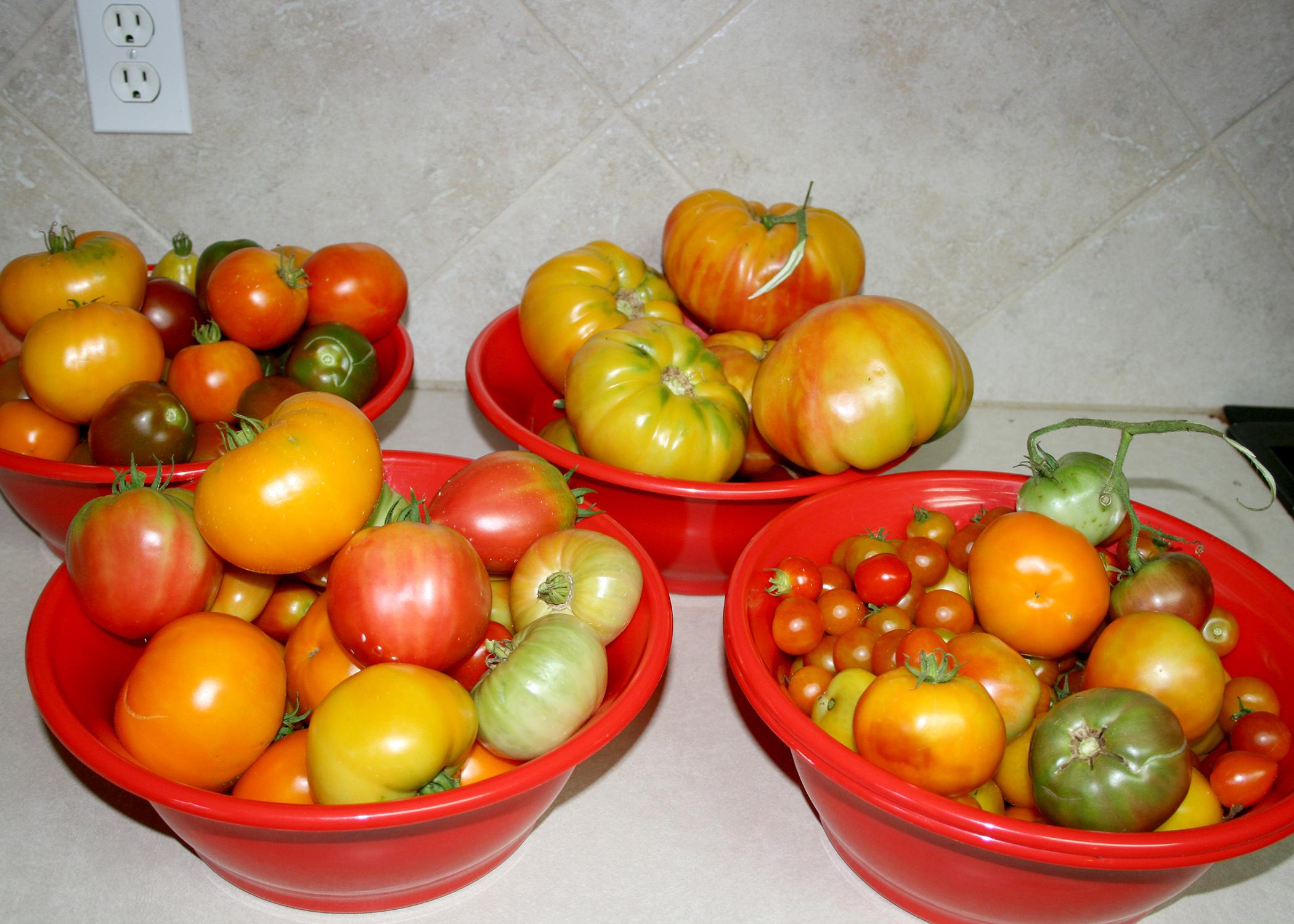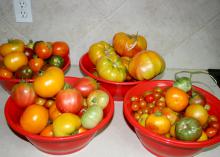Information Possibly Outdated
The information presented on this page was originally released on February 17, 2014. It may not be outdated, but please search our site for more current information. If you plan to quote or reference this information in a publication, please check with the Extension specialist or author before proceeding.
Try heirloom tomatoes for a unique garden experience
There’s a mystique about heirloom tomatoes that causes me to get several phone calls each spring from gardeners interested in growing these fascinating plants.
Let’s set one thing straight right now. There isn’t just one heirloom tomato; there are literally hundreds. These are not the perfect mass-produced hybrid tomatoes found in the seed racks and transplants at the garden center or in the bins of the grocery store.
They’re colorful, with a range from bright red, orange and yellow to mahogany brown. They even have stripes. Many are lumpy and bumpy.
Their best characteristic is that most people think heirloom tomatoes taste the way tomatoes are supposed to taste.
A frequent question is, “What makes a tomato an heirloom tomato?”
First of all, heirloom tomatoes are nonhybrid, open-pollinated plants. That means seed collected from a particular fruit will produce similar tomatoes crop after crop.
Second, heirloom tomatoes are typically defined by age. Depending on whom you ask, an heirloom tomato must be at least 25 years old. Some say 50 years or more. Others define them as seeds dating from before 1945. After World War II, hybrid development became more prevalent.
I’m of the opinion that age doesn’t matter when it comes to heirloom tomatoes, as long as the variety is open pollinated.
Third, families pass heirloom varieties down through the generations just like they do antique furniture. Any vegetable can become an heirloom when families collect their seeds and pass them on. The Nebraska Wedding tomato is a prime example. Tomatoes are also called “love apples,” and seeds were given to young couples as a crop to help start their farms.
When speaking to garden clubs, I often hear gardeners complain that they tried an heirloom tomato without success.
Hybrid varieties have been bred to perform in many different growing conditions across the country. Heirloom tomatoes are very regional, as evidenced by the seed being passed down through families. There are literally hundreds of described varieties. This great variety means that not all will grow and produce well in Mississippi gardens, but many will produce wonderful fruit for the table.
Over the past six years, I have trialed more than 50 different heirloom tomato varieties looking for some that will grow well in my Mississippi garden. These personal tests are part of the fun for me.
Mississippi’s heat and humidity in July and August influence my selections. I grow primarily determinate varieties, because they are easy to care for. Heirloom varieties can be vigorous growers, and some indeterminate varieties can easily grow 6 to 7 feet tall. Determinates range from 3 to 4 feet tall. And once July 4 rolls around, it’s just too hot for the plants to reliably set fruit and for me to care for unproductive plants.
Determinate tomatoes have a reputation for all their tomatoes ripening at once. This may be true for hybrid varieties, but in my experience, determinate heirloom tomatoes produce ripe fruit for six weeks, from the end of May to around July 4. This schedule is perfect for my style of tomato growing.
At this point, I have to make a confession: I really don’t like fresh tomatoes. I grow them because my wife likes them. In effect, I grow the love apples out of love. So there’s no reason for you not to try some heirloom tomatoes starting this year.
Now is the time to start your transplants. Seed selection will be limited in the seed racks, but take time to look through seed catalogs to find the heirloom tomatoes you want to grow this year. Try several varieties and see which do well in your garden.









